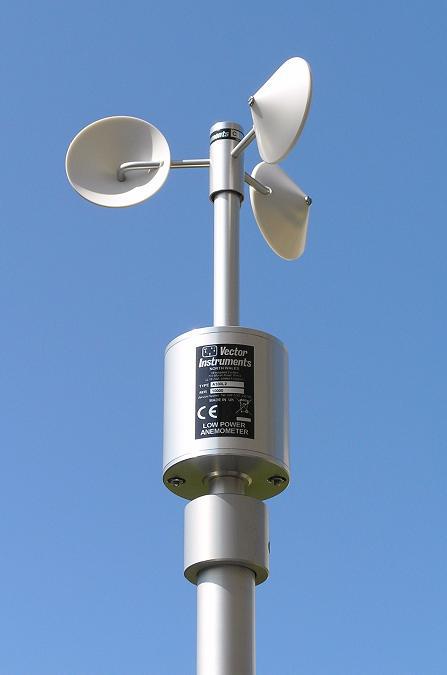Anemometer Innovations: The Current Technology for Wind Rate Measurement
Anemometer Innovations: The Current Technology for Wind Rate Measurement
Blog Article
All You Need to Know About Anemometers: Exactly How They Work, Why They Issue, and Where to Make use of Them
Anemometers, however typically neglected in the world of scientific instruments, play an essential role in numerous areas, providing valuable understandings into wind rate and air flow patterns. Understanding the auto mechanics behind these devices is necessary for anyone looking for to harness the power of this information. From meteorologists tracking weather patterns to designers creating frameworks with wind tons in mind, the applications of anemometers are far-reaching and diverse. As we explore the ins and outs of anemometer innovation, we will certainly reveal the internal workings of these devices, their significance, and the crucial factors to consider when selecting the best anemometer for specific applications.

Anemometer Fundamentals
An important instrument utilized to gauge wind speed and direction, the anemometer plays a critical function in weather forecasting and numerous sectors. An anemometer usually is composed of three or 4 cups that revolve in the wind, a vane that aims right into the wind, and sensing units to track the rotations or motions.
There are different sorts of anemometers readily available, consisting of cup anemometers, vane anemometers, hot-wire anemometers, and sonic anemometers, each with its one-of-a-kind functions and applications. Cup anemometers are generally made use of for basic wind rate dimensions, while vane anemometers are preferred for directional measurements. Hot-wire anemometers appropriate for low airspeeds, and sonic anemometers are ideal for high-precision dimensions in research and industrial setups. Understanding the essentials of anemometers is crucial for precise wind information collection and evaluation across different fields.
Principles of Anemometer Operation
Building on the foundational understanding of anemometer basics, the concepts of anemometer operation illuminate the auto mechanics behind wind speed and instructions measurements. Cup anemometers, for circumstances, have three or more mugs that catch the wind, causing them to rotate quicker as the wind speed rises. Hot-wire anemometers depend on a heated wire that cools down as wind passes over it, with the price of cooling establishing the wind rate.
Importance of Anemometers
Anemometers play an essential function in measuring wind speed and direction, offering necessary data for climate forecasting, climate research studies, ecological monitoring, and aviation operations. Meteorologists count on anemometers to gather precise wind data, helping them comprehend climate patterns, forecast tornados, and problem prompt cautions to the public. Wind farm operators use anemometers to evaluate wind conditions and make the most of electricity production from wind generators.
Applications Throughout Different Industries
Applications of anemometers great site extend throughout diverse industries, showcasing their adaptability and energy past weather forecasting. In the renewable resource market, anemometers play a critical function in evaluating wind problems for wind farm placements, ensuring ideal energy manufacturing. Industries like construction and mining utilize anemometers to check wind rates, important for security procedures, specifically when working at heights or in open-pit mines where strong winds can pose threats. Anemometers are also indispensable in the air travel industry, assisting pilots in comprehending airspeed and wind instructions for risk-free liftoffs and touchdowns. The maritime sector gain from anemometers for ship navigation, assisting sailors anticipate climate changes and change courses as necessary. In agriculture, anemometers help farmers in taking care of crop Get the facts splashing by offering real-time information on wind rate to avoid drift. In addition, anemometers discover applications in HVAC systems to enhance air flow and boost energy performance in structures. The diverse use situations of anemometers emphasize their value throughout various markets, highlighting their crucial duty in enhancing functional safety and efficiency (anemometer).

Picking the Right Anemometer for Your Needs
Choosing the proper anemometer customized to your particular demands is crucial for obtaining accurate wind speed and instructions dimensions. When selecting an anemometer, take into consideration aspects such as the intended application, required measurement variety, environmental problems, and preferred functions. For basic functions, a cup anemometer is ideal for measuring wind rate, while a vane anemometer offers wind direction data. Hot-wire anemometers are perfect for low airspeed measurements, and ultrasonic anemometers provide high accuracy and toughness.

Verdict
Finally, anemometers play a crucial duty in gauging wind rate and instructions across numerous markets. Understanding the principles of anemometer procedure is necessary for choosing the appropriate gadget for certain needs. From my company weather forecasting to air travel, anemometers are vital tools for making sure and accumulating exact data security in different applications. It is essential to take into consideration the significance of anemometers in order to make informed decisions when picking one of the most appropriate device for gauging wind problems.
There are various types of anemometers readily available, consisting of cup anemometers, vane anemometers, hot-wire anemometers, and sonic anemometers, each with its unique features and applications. Cup anemometers are generally made use of for basic wind rate dimensions, while vane anemometers are chosen for directional measurements. Hot-wire anemometers are appropriate for reduced airspeeds, and sonic anemometers are suitable for high-precision dimensions in research and industrial settings.Building on the foundational understanding of anemometer fundamentals, the concepts of anemometer procedure illuminate the technicians behind wind speed and direction measurements. For general purposes, a cup anemometer is ideal for gauging wind rate, while a vane anemometer gives wind instructions data.
Report this page